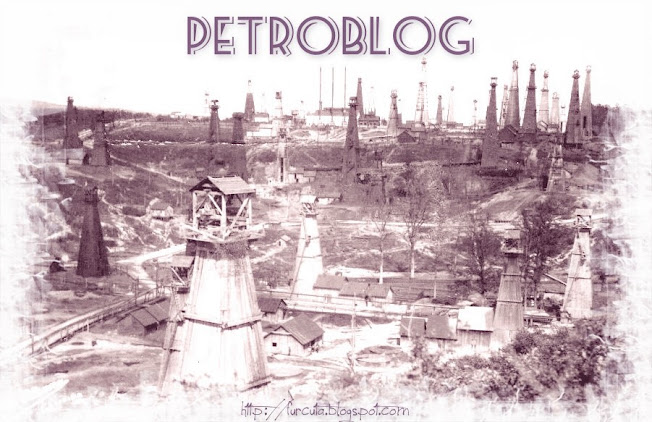''Rumania has oil trouble''
''Germany and allies fight deadly hidden war in neutral Balkans
Oil for Germany moves in these tank cars of American Essolub and British Shell out of Creditul Minier yards near Ploesti.Notice that cars are marked for German-American Oil Co. and German Railways, consigned to Hamburg and Wuppertal in Germany. They were sent from Germany to speed up romanian oil shipments.
Oil refinery in the snow near Ploiesti. This one belongs to Rumanian-owned company Creditul Minier which has 91 wells and this new plant at Brazi with an annual capacity of 3,600,000 barrels. It has an affiliate in France. Rumanian wells now beginning to run dry, produce an inferior grade of oil, inexpertly refined. A good deal of it runs to waste.''
Photographs for LIFE by Margaret Bourke-White.
Special thanks to Jeff Spencer.
B-24 Liberator Bombers ~ Raid On Ploesti ~ Astra Romana Refinery-1943
''Scarce early official US AIR FORCE PHOTO dated 1 Aug ’43 photograph shows a dramatic on board view from a B-24 Liberator bomber, flying a low level attack on the Astra Romana Refinery in Ploesti, Rumania. One of the many small oil installations in the Ploesti region is here seen receiving its share of the devastating attack - U.S. AIR FORCE PHOTO”. This early attack occurred on August 1, 1943 and was code named “Operation Tidal Wave”. Operation Tidal Wave was an air attack by bombers of the United States Army Air Forces (USAAF) based in Libya and Southern Italy on nine oil refineries around Ploesti Romania on 1 August 1943, during World War II. It was a strategic bombing mission and part of the "oil campaign" to deny petroleum-based fuel to the Axis. The mission resulted in "no curtailment of overall product output". This mission was one of the costliest for the USAAF in the European Theater, with 53 aircraft and 660 air crewmen lost. It was the worst loss ever suffered by the USAAF on a single mission, and its date was later referred to as "Black Sunday". Five Medals of Honor and numerous Distinguished Service Crosses were awarded to Operation Tidal Wave crew members''
SM Der Kaiser besichtigt die rumanischen Oelfelder bei Campina 23.09.1917
SM Der Kaiser besichtigt die rumanischen Oelfelder bei Campina 23.09.1917
''Myron M. Kinley Accomplishes Impossible in Rumania''
OKLAHOMA OIL EXPERT HALTS Myron
M. Kinley Accomplishes 'Impossible' in Rumania After 14 Had Died
By WILLIAM VOIGT, JR. (Associated
Press Writer)
TULSA, Okla., April 3. American
ingenuity and persistence have triumphed over the most stubborn oil field fire
in history, and so Myron M. Kinley is home from the world's longest fire
run from Tulsa 7,000 miles to Moreni, Rumania. Before Kinley, famous
for his flame fighting exploits in this country, set out to harness the
veritable volcano, the blazing well had taken 14 lives and cost $750,000 in
hard American money over a period of two years. After he began actual
operations, six months were required to tame the unruly well, which spouted gas
at the rate of 250,000,000 cubic feet daily from a sand 5,000 feet deep. The
well blew wild and caught fire May 28, 1929. Resources of the Rumanian
government and of the American oil company holding the drilling concession
proved insufficent to control it. In addition to those killed, more than 100
persons were injured in explosions and mishaps at the well. Steel equipment was
melted by the intense heat. The drilling engine was never found, although
twisted bits of the steel derrick were dragged from the flames. By spring of
1931 the fire had burned out a crater 250 feet wide and 65 feet deep. From a
hundred crevices in the crater walls burned smaller torches, fed from gas
escaping through earth fissured by the heat. Kinley, still on crutches
from a leg fracure suffered while extinguishing the Gladewater, Texas, fire
that took nine lives, went to Vienna to attend a convention last summer.
Thence
he proceeded to Rumania to seek permission to snuff the huge torch. "The
fire had become political fuel, and figured in elections," Kinley said. With two assistants the Rumanian
government permitted him to employ an American and a Rumanian Kinley dragged
explosives to the edge of the crater and lowered them in fireproof wrappings
near the fire. Streams of water were played on the men constantly as they
approached the flames. "We used
hundreds of pounds of explosives blasting dirt into the hole," Kinley explained.
Water was played on the crater continually, and the mud and cement used in the
operation boiled and bubbled like lava. The resemblance to a volcano was heightened
by the fire, which burst through frequently, sometimes in an explosion that
hurled the boiling mixture high into the air. The fire finally was choked off
by filling the crater with the hardening cement mixture, which was gradually
cooled by tons of water. Actual work began last Aug. 3, 1931, and the task was
completed Feb. 7, when the well was tapped far underground and the gas turned into
pipelines for commercial usage.
Oil wells at Moreni, Prahova. Night view.
I. A. Mateescu Bookstore Publishing House.
Oil wells at Moreni, Prahova. Night view.
Photo by Olteanu-Campina
Petroleum bore in Romania
Petroleum bore in Romania.
This country's famous oil-fields were practically destroyed during World War, but made a good recovery.
Romania has long produced petroleum, and many of the hand-dug wells are still worked.
Some 6,700,000 metric tons of crude oil have been obtained in a recent year.
Subscribe to:
Comments (Atom)



















































